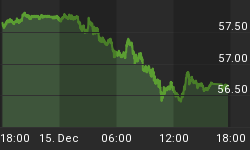6/21/2010 9:15:46 AM
Trade Recommendations:
Take no action.
Daily Trend Indications:

- Positions indicated as Green are Long positions and those indicated as Red are short positions.
- The State of the Market is used to determine how you should trade. A trending market can ignore support and resistance levels and maintain its direction longer than most traders think it will.
- The BIAS is used to determine how aggressive or defensive you should be with a position. If the BIAS is Bullish but the market is in a Trading state, you might enter a short trade to take advantage of a reversal off of resistance. The BIAS tells you to exit that trade on "weaker" signals than you might otherwise trade on as the market is predisposed to move in the direction of BIAS.
- At Risk is generally neutral represented by "-". When it is "Bullish" or "Bearish" it warns of a potential change in the BIAS.
- The Moving Averages are noted as they are important signposts used by the Chartists community in determining the relative health of the markets.
Current ETF positions are:
DIA - Long at $101.18 ($101.37 - $0.19 dividend)
QQQQ - at $45.50 (adjusted down $0.05 for a dividend payment)
SPY - Long at $107.99 ($108.52 less the $0.53 dividend)
Daily Trading Action
The major index ETFs opened higher (price was lower but that didn't account for the dividends they issued) and then moved lower for the first half hour of trading then moved higher for the next hour. The next hour and a half was spent moving lower, with a move higher for the following hour and three quarters. The final hour and three quarters was spent with choppy trading and with the major indexes endind near where they started. The Russell-2000 (IWM 66.80 +0.04) followed a similar script but with more exaggerated moves. Also, the Russell-2000 definitely walked up the support of short term uptrend lines and looks to be setting up to break out higher. The Semiconductor Index (SOX 371.21 -1.18) closed fractionally lower. The Bank Index (KBE 24.84 +0.14) moved a half percent higher (and issued a modest dividend) while the Regional Bank Index (KRE 24.88 -0.03) closed nearly flat. The 20+ Yr Bonds (TLT 97.69 -0.16) closed modestly lower. Volume was the lightest we have seen on a Quadruple Witching day.
There were no economic reports of interest released. Instead, there was only the grilling of BP's CEO, Tony Hayward by a Congressional committee. Mr. Hayward came willingly to be the target of our Congressional representatives who put on a show for their constituencies but otherwise looked rather foolish. They represented that a "little" bit of knowledge can be quite destructive as most of them were clearly lacking on the knowledge part.
Traders eagerly awaited the quarterly event known as Quadruple Witching, when stock options, stock index options, single stock futures, and stock index futures expire on the same day. Volume was expected to spike as option positions we squared up. This didn't happen.
The Major Index ETFs all went ex-dividend with the QQQQ paying $0.05, DIA paying $0.19, and SPY paying a dividend of $0.53 per share for holders of record at the close on Thursday. This explains why all the major indexes (NASDAQ-100, Dow, and S&P-500 closed modestly higher while QQQQ, DIA, and SPY closed modestly lower. The Regional Bank Index (KRE) paid a $0.09 dividend and the Bank Index (KBE) paid a $0.03 dividend as well. IWM and USD will issue a dividend in the coming week.
Key resistance levels came in to play as the major indexes, the Russell-2000, and the Semiconductor Index all trade at significant resistance levels. A break higher can release a lot of energy from the market as well as result in a significant move.
Implied Volatility slid again with the S&P-500 (VIX 23.95 -1.10) 25.05 -0.87) implied volatility falling 3.4% percent and with the implied volatility for the NASDAQ-100 (VXN 24.15 -1.00) falling just under four percent.
Commentary:
Friday's quadruple witching was a non-event as trading volume was light, especially for an options expiration day. With the major indexes little changed and bumping up on resistance, we have to wait for the battle to be played out. We still expect the major indexes to move higher as they only recently broke up through their 200-Day Moving Averages. The S&P-500 is back to the level of resistance seen in November 2009 at around 1114. The Russell-2000 has tried to move above the same level of horizontal resistance for seven sessions of the last seventeen sessions. A move that definitively breaks above these levels should release a fair amount of energy and has the potential to be quite dramatic. Likewise, a failure to break above resistance could put the bears back in charge. For now, we will maintain our long positions.
It should be noted that the Russell-3000 will be rebalanced the following Friday, June 25th. More than 460 companies will be swapped into and out of the Russell-3000 universe. This will affect trading for the coming two weeks and will result in one of the heaviest trading volume days of the year on Friday, June 25th.
We hope you have enjoyed this edition of the McMillan portfolio. You may send comments to mark@stockbarometer.com.
















